It is referred to as the Citroën Frua-SM, Citroën SMS, Citroën-Maserati S Coupé and Fiat 130 Coupe, but in reality it is just one vehicle, a prototype that indicates some very interesting direction as to where Maserati was going at the time under Citroën control.
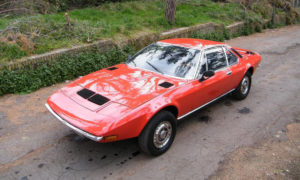
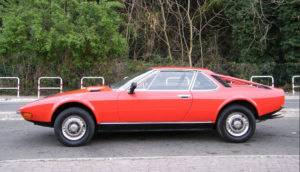
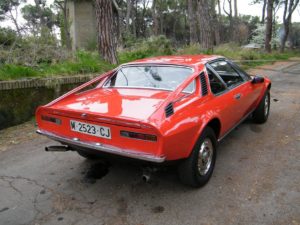 3 photos of the Citroën Frua-SM.
3 photos of the Citroën Frua-SM.
Using Citröen SM mechanical components, this unique prototype was created by the Italian Carrozzeria Frua in 1971 and was first displayed at the Geneva Auto Salon in March 1972. As one can see from the styling, it shows a mix of what future Maseratis would be that were to use Citroën components.
Following its debut at Geneva in ’72, the Frua Citröen SM was shown there again the following year and also at the International Motor Show in Barcelona, Spain. It then passed into private ownership in Spain before coming to an owner in Italy in the late 1980s. Partially restored during 2011/2012 and displaying a total of 41,946 kilometres (approximately 26,000 miles), the Frua was sold at the Bonhams Monaco Auction in 2012.
At that time Citroën owned Maserati and this Frua-styled ‘concept car’ looks remarkably similar to the Maserati Khamsin. The latter was first seen as a prototype displayed by Carrozzeria Bertone at the 1972 Turin Auto Show, and debuted as a Maserati production model at the Paris Motor Show in 1973.
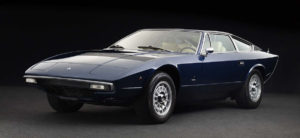

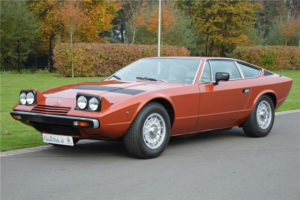 3 photos of the Maserati Khamsin.
3 photos of the Maserati Khamsin.
A conventional front engine/rear-wheel-drive design, the Khamsin was powered by a longitudinally mounted V8 engine in the front powering the rear wheels, whereas the Citröen Frua SM, like the Citröen SM production fastback coupe, employed front-wheel drive with the 90-degree Maserati V6 engine from the SM placed far back in the front so it was, in effect, mid-engine in layout.
The Frua-styled SM may owe its existence to proposals from Citroën for a front-wheel-drive Maserati sports car, and although the Italian company would go on to use the Citröen-inspired V6 engine it would ultimately be in the mid-engine (placed behind the passenger cabin) Merak.
Initially known as Tipo 117 and later the Bora, the Maserati project got underway in October 1968 and a prototype was on the road by mid-1969. Shown in its final form at the Geneva Salon in March 1971, deliveries of the Giorgetto Giugiaro designed Maserati Bora began before the end of the year.
Equipped with a 4.7L mid-engine V8 powering the rear wheels, the Bora incorporated Citroën’s LHM hydraulics that were adopted to operate the disc brakes, clutch, driver’s seat [vertical] adjustment and the retractable headlights.
The Maserati Merak was introduced at the 1972 Paris Auto Show in October 1972 and was presented as a Maserati Bora-based derivative of the Bora but was powered by a 3L bored-out version of the 2.7L V6 Citroën SM engine fitted in the mid-engine layout and like the Bora, powering the rear wheels.
The Merak and the Bora share the front part of bodyshell up to the doors. The front ends differ, mainly by the use of dual chrome bumpers on the Merak, in place of twin trapezoidal grilles on the Bora, but the similarities end at the B-pillar. Giorgetto Giugiaro at Italdesign was commissioned to transform the Bora into the Merak. Unlike its bigger sister the Merak doesn’t have a fully glassed fastback rear, but rather a cabin ending abruptly with a vertical rear window and a flat rear deck engine cover. Giugiaro completed the Merak’s silhouette by adding open flying buttresses, visually extending the roofline to the tail, as in the Citroën Frua SM prototype.
Certain Citroën hydropneumatic systems were used in the Merak and early Merak SS. In these cars the braking system was hydraulically assisted and operated, as was the clutch and the pop-up headlights were hydraulically actuated.
With the Frua we see the only front wheel drive effort from Maserati, an automobile based directly on the SM with V6 power and front wheel drive, an interior with obvious SM features (looking at the center console), and cloaked with a body that seems to have influenced the Maserati Khamsin while not being clear if the rear buttresses influenced the design of the Merak or that feature was taken from the Merak for the Frua.
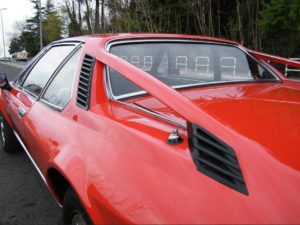 Flying buttresses of the Citroën Frua SM prototype.
Flying buttresses of the Citroën Frua SM prototype.
 Headlights raised on the Citroën Frua SM, – similar to the Khamsin.
Headlights raised on the Citroën Frua SM, – similar to the Khamsin.
Whatever the pedigree, the Citroën Frua SM is a unique vehicle that puts in context the influence Citroën had on Maserati at the time.
More photos of the Citroën Frua SM’s initial design, construction, display at various shows and a driving video can be seen here: http://www.pietro-frua.de/1972_citroen.htm.
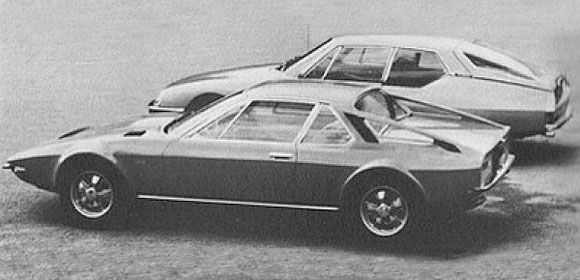
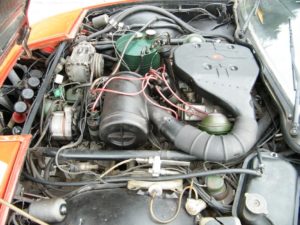
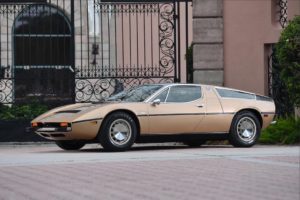
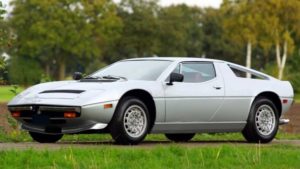
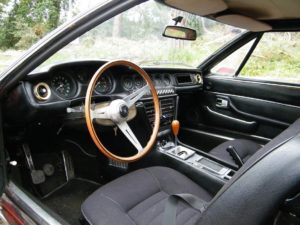

Maserati built another SM-based FWD model, the Quattroporte II, a boxy 4D on an elongated SM platform.
Ed Note: Yes, we did an article about the Quattroporte II here: https://citroenvie.com/sm-based-prototype-maserati-quattroporte-ii-up-for-sale/.
It is actually an evolution of the design the Hispano_aleman Vizcaya, based on a Porsche 914-S displayed at the 1971 Geneva Motor Show. https://www.undiscoveredclassics.com/authors/1971-porsche-914-6-hispano-aleman-by-frua/